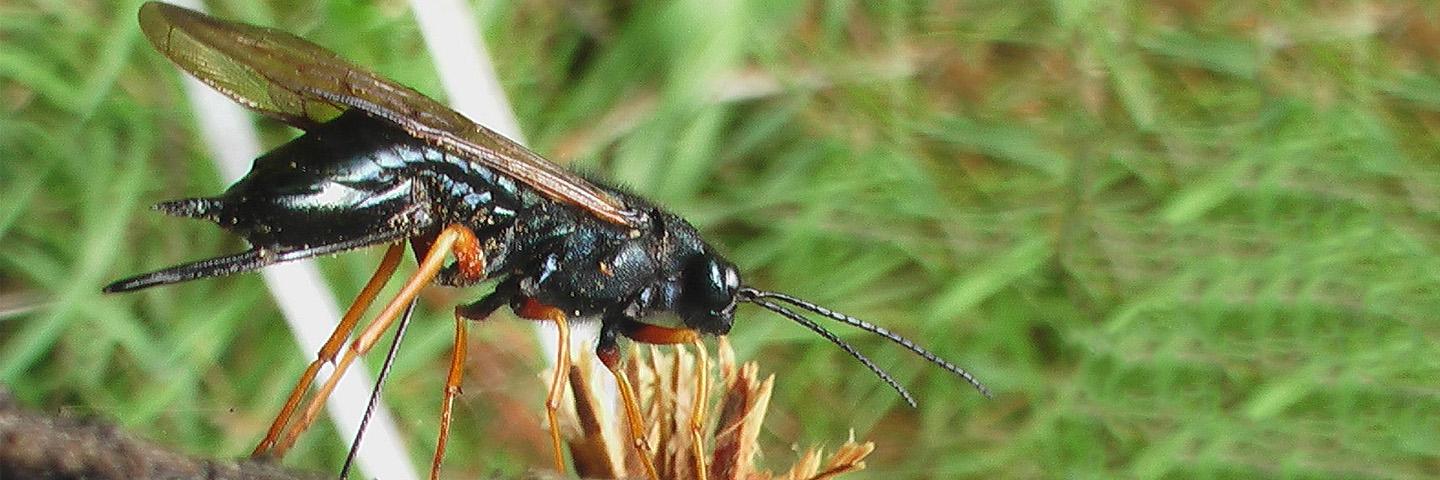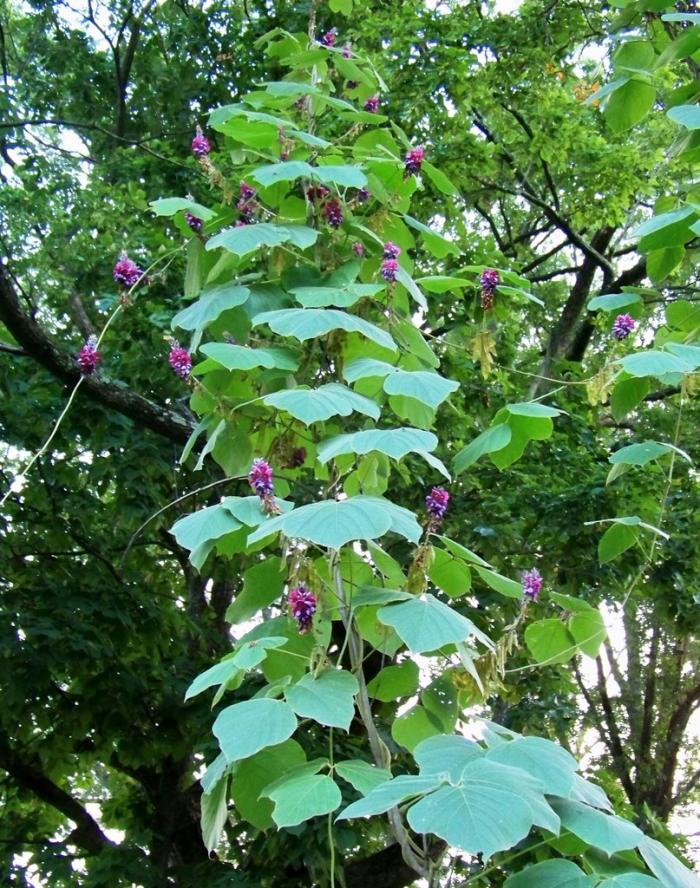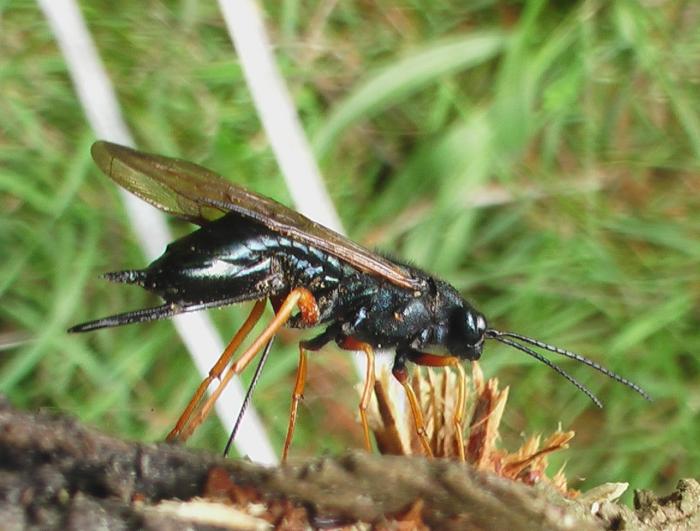
Everyday, invasive species are threatening the health of our nation’s vital agricultural and natural lands.
National Invasive Species Council and Invasive Species Advisory Committee
Forests and rangelands are being infested, cropland production is being negatively impacted, streams and waterways are being choked with weeds, and wildlife species are losing habitat. These conditions are just a few of the negative impacts that will continue, or will become more severe, if successful actions are not taken to halt and/or reverse this trend.
Plants Database
Names, checklists, automated tools, identification information, species abstracts, distributional data, crop information, plant symbols, plant growth data, plant materials information, plant links, references, and other plant information.
Invasive Plants

Invasive plants, designated by state or national agricultural authorities as threatening to agricultural and/or horticultural crops and/or humans and livestock, include everything from the fast-growing kudzu vine that blankets the eastern, southern and central states, to the Texas Blueweed of the southwest United States. These, and many other invasive plants take over America’s green spaces reducing economic productivity and upsetting ecological integrity.
Over the past several years, the rate of introduction of invasive plants has risen significantly, degrading renewable resources, diminishing the productive capacity of agriculture lands and degrading wildlife habitat. Humans, often unknowingly, transport invasive species into new areas on cargo ships, boats, airplanes, automobiles, and other modes of transportation, including their own bodies.
NRCS works internally through its Plant Materials Centers and with many other partners to address the spread of plants that have been classified as noxious or invasive.
Invasive Animals

Invasive animals (both terrestrial and aquatic) are a type of invasive species and include animals that are threatening America’s habitats and human population. Animals, such as the feral hog, European gypsy moth and sirex woodwasp, constitute a threat to the health and well-being of humans.
National Invasive Species Council and Invasive Species Advisory Committee
Overview and Selected Specific Examples of NRCS Activities to Address Invasive Species
NRCS helps producers to tackle invasive species problems in four major ways
- Technical and financial assistance to manage invasive species and pests;
- Conservation initiatives that work at a landscape scale to address natural resource concerns, including invasive species;
- Conservation Innovation Grants with partner entities to support development and implementation of innovative approaches and strategies to address invasive species; and
- Plant Materials Center research geared toward invasive species management and restoring areas where invasive species have been removed.
Technical and Financial Assistance to Producers to Manage Invasive Species and Pests
NRCS technical assistance for invasive species begins with NRCS invasive species policy that:
- Directs NRCS to prevent the introduction of invasive species, to provide for their control, and encourage the use of native plants species in restoration activities,
- Encourages partnerships and local assistance for compiling State and regional invasive species lists and in detection of invasive species,
- Requires assisting with detection, inventorying, and monitoring on private lands as part of the conservation planning process, and
- Requires informing landowners of the presence of invasive species and providing appropriate conservation technical assistance.
NRCS Conservation Practices that directly address invasive species management and control include:
- Brush Management (CP# 314),
- Early Successional Habitat Development/Management (CP# 647),
- Forest Stand Improvement (CP# 666),
- Integrated Pest Management (CP# 595),
- Prescribed Burning (CP# 338), and
- Prescribed Grazing (CP# 528).
Conservation Activity Plans (CAPs) are specialized, in-depth conservation plans that address specific resource issues. CAP 154 - IPM Herbicide Resistance Weed Conservation Plan specifically addresses herbicide-resistant cropland weeds. CAP 114 - Integrated Pest Management Plan uses a sustainable ecosystem-based approach for managing pests, including invasive species.
Financial Assistance provided since 2008 has been used to help producers to treat nearly 20 million agricultural and forest acres to address invasive and pest species problems, including:
- Environmental Quality Incentives Program (EQIP) – nearly 18,000 contracts covering nearly 12.6 million acres ($386 million in financial assistance)
- Wildlife Habitat Incentive Program (WHIP) – 2,421 contracts covering nearly 324 thousand acres ($38 million in financial assistance)
- Agricultural Management Assistance Program (AMA) – 187 contracts covering over 19 thousand acres ($3.4 million)
- Conservation Stewardship Program (CSP) (since 2010) – enhancements applied on nearly 6.5 million acres.
Herbicide-resistant weed control in the Southeast. Diverse crop rotations, herbicide rotation, mechanical control, and monitoring are the foundation of the current resistant weed management strategy. In Alabama, NRCS collaborated with the Agricultural Research Service, Alabama Cooperative Extension System, Auburn University, and Alabama A&M University in 2011 and 2012 to use integrated strategies for the control of Palmer amaranth (pigweed). More than 5,800 acres were enrolled in 26 EQIP contracts to address pigweed problems. In North Carolina, NRCS offered the use of Conservation Cropping System alternatives (CP# 328) in 2012 order to encourage producers to adopt variations from the monoculture annual herbicide tolerant soybean and cotton crops. In 2012, nearly 39,000 acres were enrolled in EQIP contracts to address invasive species control in North Carolina.
Conservation Initiatives
- NRCS has implemented a broad spectrum of initiatives since January of 2009. These initiatives enable NRCS to more effectively address priority natural resource concerns by delivering systems of practices, primarily to the most vulnerable lands within geographic focus areas. Several initiatives address invasive species concerns either as a primary concern or through a broader effort to restore wildlife habitat and ecosystems.
- In March of 2010, NRCS launched the Sage-Grouse Initiative to provide a holistic approach to conserving sage-grouse and sustaining working ranches in the West. One of the threats to both sage-grouse and to ranching is encroachment by invasive conifers and loss of plant species diversity. In 2010 and 2011 NRCS provided support to ranchers in removing encroaching conifers on over 105,000 acres, addressing cheatgrass infestations, and planting native grasses and forbs to improve the productivity of this land and provide key nesting, brood-rearing, and wintering sites for the bird. Work continues on this effort in 2012.
- Through the Everglades Initiative NRCS and our partners work with producers and landowners to implement voluntary conservation practices that improve water quality, control invasive plant species, benefit wildlife and fish habitat and support rural economies in the Florida Everglades region. An important component of this effort is to control invasive species that degrade the habitat and water regimes of this nationally treasured ecosystem. NRCS assists producers in the Everglades, including the Seminole Tribe, to implement brush management, herbaceous weed control, and prescribed grazing practices as part of systems to address the resource concerns caused by invasive species.
- NRCS is a partner in the multi-agency Great Lakes Restoration Initiative aimed at protecting and restoring priority watersheds to improve water quality and address invasive species, among other concerns. Through this initiative, NRCS has helped address diverse invasive species concerns, such as woody invasives in forests near Chicago.
Conservation Innovation Grants
Conservation Innovation Grants (CIG) fund innovative conservation approaches and technologies to accelerate technology transfer and adoption of promising technologies and approaches to address some of the Nation's most pressing natural resource concerns. Since 2004, NRCS has funded 8 CIG projects in 7 states, totaling $1.9 million, to promote management of invasive species. Projects have ranged from control of plant species in wetlands, pastures, and prairies to utilizing invasive plant species as a source for biofuel.
Plant Materials Centers
Plant Materials Centers (PMCs) in many areas of the country are directly involved in research and education efforts for the detection, control, and management of invasive species. For example, the Pullman, Washington PMC has since 2007 focused on raising the awareness and identifying control methods for a relatively new invasive plant, Ventenata, which has the potential to degrade hay, pasture, and Conservation Reserve Plantings (CRP) if left unchecked. The Elsberry, Missouri PMC has a multi-year project underway with Lincoln University, located in Jefferson City, Missouri, to study the control of invasive shrubs in forest understory using ruminant animals (goats and sheep). The results of this project will help inform land managers in Missouri and surrounding states about invasive species management options in forests and natural areas.
PMCs across the country have selected and released to the public over 350 native grasses, legumes, and wildflowers. These selections are available commercially for use in NRCS conservation practices and programs on private lands, as well as by many State and Federal agencies on public lands. PMCs have developed methods for the establishment of native species and selections to promote diverse plantings which are more resilient to colonization by invasive species. These same native plants are also critical for replanting or restoring a site once invasive species are removed.

